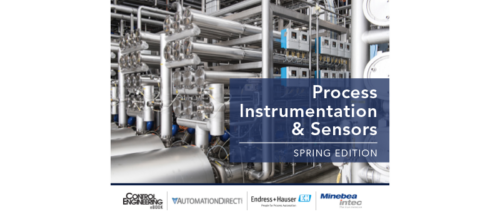When your parts supply for an old system runs out
Providing geriatric care for an aging control system or piece of critical equipment can require you to be creative when your parts supply dries up. There are alternatives.
In most plants there is some piece of equipment or a system that is still critical to production, but might be more appropriate for a museum than day to day operation. That kind of situation persists usually because there is no practical alternative, or replacement is a major investment.
Repairing and replacing mechanical parts is daunting enough in itself, but some electronic components can be even worse. If you have an old control system and blow out an I/O card or a controller card, finding a replacement can be a serious challenge.
If the OEM has closed out that product line or is no longer in business, your main choices include buying retired equipment from other users, also known as the eBay option, or going to parts recyclers. Many systems that were deployed widely have independent companies that buy and sell used parts. Some companies have internal groups that fill that function. Honeywell Process Solutions has a Certified Recycled Parts department where old equipment acquired from customers can be refurbished.
While those options often work, sometimes what you’re dealing with is just a little too obscure or too old to find what you need. If you can get your hands on an old transistor or capacitor to replace the burned one on a strategic board, that’s great, but often those board-level components are simply not to be found. When that is the case, your only choice may be to reverse engineer the device and make it from scratch using modern components. OEMs do this sort of thing for their old systems that are still supported since they also have to deal with component-level obsolescence.
There are companies that serve as reverse engineers, that can pull apart the old device and figure out how to duplicate its functionality using modern components. One such company is Stilwell Baker, an electronics manufacturer in Vancouver, WA. One of its specialties is analyzing and duplicating old devices to keep legacy equipment running. Providing that service has proven to be an interesting challenge for the company.
Darrel Baker, president, says that the first step of a reverse engineering project is to understand how the specific device operates in the larger context. “The new unit has to play well with other equipment in the system,” he says. “We don’t just duplicate the old circuit, because either those parts are no longer viable, or it’s just better to do it in modern components once you understand what functionality you’re trying to deliver. Sometimes you can get information from original documentation, otherwise you have to measure the functions. Along the way, we usually improve functionality, either in the form of protection or isolation. When there is a failure-driven element, we have to find the root cause, because if you don’t, you could inadvertently design in another failure mode.”
Typical improvements involve replacing old through-hole boards and discrete semiconductors with more modern techniques and devices. In one example, Stilwell Baker had to recreate annunciator cards for a legacy alarm system (see photos) that had many installations throughout a large water utility. The original cards, designed in the 1960s, used bipolar transistors to turn tungsten light bulbs on and off. The new cards use MOS-FETs to handle switching which should provide a longer operating life.
Understanding the functionality of a device can require a lot of analysis when there is a lack of documentation. One of the most challenging projects was modernizing the automatic flight control system for a fleet of Erickson S-64 Aircrane helicopters. “The original Sikorsky autopilot was designed in the 1950s, so it was a 400 Hz, analog computer using iron gyros, synchros, resolvers, and clutches,” Baker explains. “We had the transfer functions and we had the gains of the various pads, but the documentation was incomplete, and in some cases we had to characterize a piece of equipment by measurement in order to get enough data to make sure we could duplicate similar functionality. It was very important that the helicopter fly the same way in the certification flights. We hit it right on the nose, but it did take a lot of effort to make sure we were right. That’s an extreme case, but the methods are generally the same.”
In some cases there is little or no documentation, and sometimes not even a working unit. In these cases, an engineer has to figure out functionality component by component, and that can mean un-potting devices and studying failed parts with a scanning electron microscope. Ultimately, the practicality of such projects comes down to understanding the financial realities of the specific situation.
“Low-volume manufacture of electronic assemblies is a very cost inefficient process,” Baker notes. “But if the legacy system is of high enough value, then that really doesn’t matter. If your alternative is to spend millions to bring a new modern system into operation, then spending $50,000 to keep an existing system operating for another year could pay for itself in a month. But it’s something that you have to think through carefully because the numbers don’t always make sense.”
Peter Welander, pwelander@cfemedia.com
www.stilwellbaker.com
Do you have experience and expertise with the topics mentioned in this content? You should consider contributing to our CFE Media editorial team and getting the recognition you and your company deserve. Click here to start this process.


